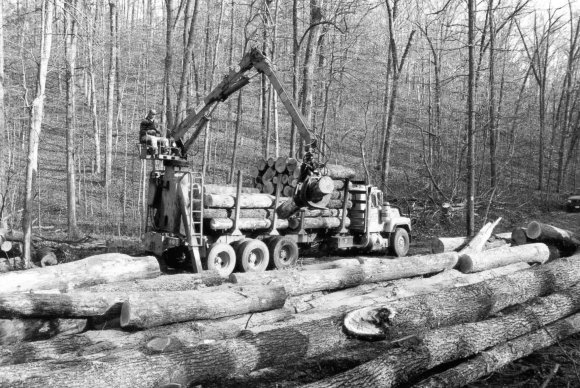All of us have felt at times that we were being treated like mushrooms--kept in the dark and fed manure. For some of us the lights came on recently when Dusty Walter, then an MU forestry graduate student, presented the findings from a study he was working on.
Walter gave his report at the annual Missouri Tree Farm/Stewardship Days in Columbia. This is a gathering of forest and timber interests in the state, especially forest landowners and the private and public foresters who work with them. Walter was encouraged to do his study by a long-running, but unproven, argument that Missouri landowners do not receive as much money for their harvested timber as landowners in nearby states, especially landowners in Illinois, Indiana and Ohio.
To help settle the argument, Walter dug through timber price reporting data from several states for the past five years. It was not an easy job. He quickly found that there is little consistency in timber price reporting from state to state. On top of that, at least two different measuring scales are used to determine the amount of board feet of lumber in a log and some states do not report both stumpage (prices received by landowners for standing timber) and prices for logs delivered to the mill for all species. To his credit, Walter made every attempt to separate data so he was comparing apples to apples as nearly as possible.
The results were quite glaring and started some brush fires in the industry. For instance, he determined that veneer grade black walnut logs, the cream of the crop, show a tremendous disparity in pricing among states. In 1994, Indiana mills were paying more than $4,000 per thousand board feet for walnut veneer logs delivered to their sites. Missouri mills were paying about $800. By 1999 the gap had narrowed a bit. Indiana mills were paying a little over $3,000 while Missouri mills paid a little less than $1,500. Grade 1 and 2 lumber logs exhibited similar price discrepancies, with the gap closing only slightly in most recent years.
Prices paid directly to landowners by loggers followed a similar pattern. In 1994, Illinois landowners were paid about $1,600 per thousand board feet for walnut veneer stumpage while Missourians received only $650. By 1999 that difference had been reduced with Illinois landowners receiving nearly $1,400 and Missourians about $975.
The report was followed by an immediate rush to explain the deficiencies by each of the timber industry's special interests. Loggers and mill operators justified the lower prices by pointing to lower quality of Missouri timber in general. However, we have to ask, "Isn't a Grade 1 lumber log the same in Missouri as it is in Illinois?" There also is the accusation that Missouri's price reporting system is inadequate because it relies on voluntary reporting. That seems to be a self-damning admission.
It also was pointed out that Missouri lacks competition among mill buyers, especially in north Missouri where there are few mills. Could be, but it is fairly well established that most of Missouri's veneer quality logs are exported to eastern states where veneer mills are located. Someone must be pocketing the difference along the way.
Foresters present a good case for low stumpage prices and low income to landowners. Fewer than 5 percent of timber sales in this state involve a professional forester and the bidding process (see Shelby Jones' article in this issue). In most sales the landowner sells to the first logger coming along at the time the landowner needs the money. Without competitive bidding through a qualified forester, the landowner has little chance of determining fair price. It is common to see winning bids in competitive sales as much as five times higher than the low bid.
Far from settling the argument, this new information has added fuel to the fire.
Explanations may dampen some of the heat, but do not correct the discrepancies.
Missouri's timber interests, including farmers/landowners, need to take the lead in
establishing a fair and workable price discovery mechanism for this valuable crop.
-- Reprinted from the May issue of Missouri Ruralist
